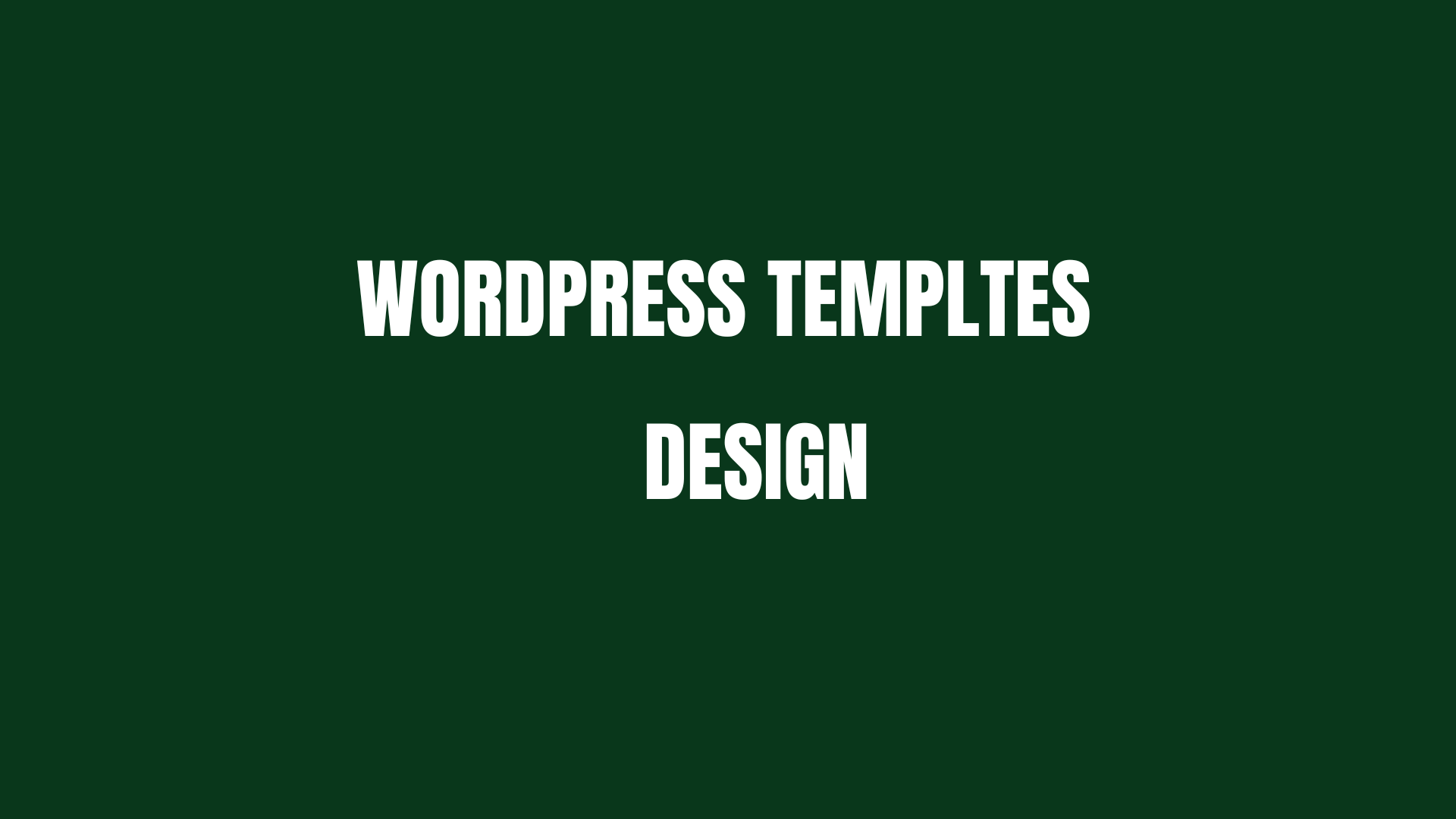When you think about building a website, the first thing that might come to mind is the content — your blogs, your products, your services. But before all that, there’s one thing that silently does the heavy lifting: your WordPress template design. It’s more than just how your site looks — it’s how it feels, how people move through it, and how your brand comes to life online. A good template can make your website feel smooth, trustworthy, and easy to use. A bad one? It can confuse visitors, slow your site down, and hurt your credibility. Whether you’re a blogger, business owner, or freelancer, the right template design can help you stand out. In this guide, we’ll walk through what WordPress template design really means, why it matters so much, and how to find one that works perfectly for what you’re building — without all the techy stress.
What Is a WordPress Template Design?
A WordPress template design is like your website’s outer shell — it decides:
- The layout (single column, grid, sidebar, full-width)
- The styling (fonts, colors, icons, button shapes)
- How each page type looks (homepage, blog, about, product, etc.)
- Where content, menus, and footers appear
It’s often part of a theme, which comes with multiple templates. So when you change your template, you’re basically telling WordPress:
“Here’s how I want this page to look and behave.”
Why Template Design Matters More Than You Think
Here’s the truth:
People judge your website within 3 seconds.
If your design looks outdated, slow, messy, or unprofessional — they’ll bounce.
But if it looks clean, fast, and trustworthy, they’re more likely to:
- Stay longer
- Explore your content
- Buy from you
- Contact you
That’s the power of good WordPress template design.
Benefits:
Boosts first impressions
Builds brand credibility
Helps SEO rankings
Improves user experience
Increases conversions
Your site design speaks before you do — make sure it’s saying the right thing.
Types of WordPress Template Designs (And What They’re For)
There’s no one-size-fits-all design. WordPress templates come in all shapes and styles. Here are some common types:
1. Blog Templates
Perfect for writers, bloggers, and creators.
Features:
- Simple layouts
- Clean typography
- Sidebar for categories, ads, or recent posts
2. Ecommerce Templates
Made for online shops (usually with WooCommerce).
Features:
- Product grids
- Cart and checkout designs
- Filters, reviews, and sale tags
3. Portfolio Templates
Best for freelancers, photographers, and designers.
Features:
- Visual-first design
- Project showcases
- Interactive galleries
4. Business Templates
Great for service providers or startups.
Features:
- Service sections
- Testimonials
- Pricing tables and contact forms
5. Multipurpose Templates
Flexible enough for any niche.
Features:
- Pre-made demos
- Drag-and-drop builders
- Customizable sections
Must-Have Mobile-Friendly
Over 60% of your visitors are using mobile devices.
So your template must be:
- Fully responsive
- Easy to scroll
- Quick to load
- Touch-friendly (buttons, sliders, forms)
If your site looks weird on mobile, your visitors won’t wait — they’ll leave.
Tip: Before choosing any template, open its demo on your phone and test it like a real user.
SEO-Friendly Design: More Traffic
What many people don’t realize is that your template affects your SEO too. Here’s how:
Good template design includes:
- Proper heading structure (H1, H2, etc.)
- Schema markup (helps Google understand your content)
- Fast loading times
- Clean code
- Optimized images
- Integration with plugins like Yoast or Rank Math
More SEO-friendly your template → More visibility on search → More organic traffic
Simple, right?
How to Choose the Right Template for Your Site
Don’t just go with what “looks cool.” Here’s a simple process to help you choose:
Step 1: Define Your Goal
Ask: What do I want visitors to do?
- Read my blog?
- Buy a product?
- Contact me?
- View my portfolio?
Your goal should shape your design.
Step 2: Check Demo Pages
Always test the template’s demo. Look at:
- Homepage
- Blog or shop layout
- About and contact pages
- Menu and footer designs
Step 3: Test Speed & Responsiveness
Use tools like GTmetrix or Google Page Speed to check how fast it loads.
Step 4: Check Customization Options
Does it allow you to:
- Change colors?
- Edit fonts?
- Add/remove sections?
- Use Elementor or Gutenberg?
A flexible template saves you hours of frustration later.
Want to Design Your Own Template?
If you want full creative control, you can build your own layout using tools like:
If you want your website to look exactly how you imagine — without depending on ready-made themes — you can create your own WordPress template using simple, no-code tools. Today, you don’t need to be a developer to build custom layouts. Tools like Elementor (a drag-and-drop page builder), Gutenberg (WordPress’s native block editor), SeedProd (great for landing pages), and Divi Builder (a powerful visual theme builder) give you full control over every part of your website. You can design unique headers, footers, homepages, product sections, and even blog layouts — all with just clicks and creativity. These tools are beginner-friendly, mobile-responsive, and optimized for performance. So whether you’re launching a personal blog or building a business site, you can craft a layout that fits your brand perfectly — no coding required. Just drag, drop, edit, and publish — it’s that simple.
Final Thoughts
Choosing the right WordPress template design is like picking the outfit your website wears every day. You want it to be:
- Functional
- Stylish
- Comfortable (for the user!)
- And a good fit for your goals
So take your time. Test demos. Think from your visitor’s point of view.
And remember:
A good template doesn’t just make your site look great — it helps it perform better, load faster, and convert smarter.



